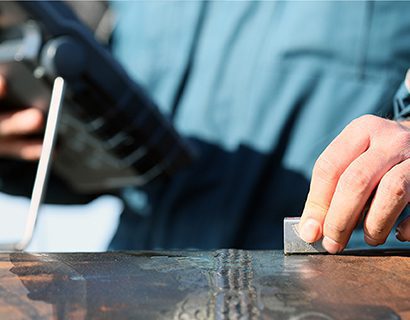U.T.
Ultrasonic Testing
#thinkNDTi are vastly experienced at Ultrasonic Testing both standard and shearwave, this popular non-destructive testing method is highly effective and with fully trained engineers at the ready we can cover the whole of the U.K.
Detecting defects in materials
Ultrasonic Testing is a non-destructive testing method that relies on the transmission of high-frequency sound waves into materials. The basic principle involves sending ultrasonic waves through the material being examined and analysing the reflections or echoes that bounce back. UT is highly effective in detecting internal and subsurface defects such as cracks, voids, inclusions, and thickness variations.
Applications across Industries.
Want a chat?
Take me back
The Ultrasonic Testing (U.T.) Procedure
The UT procedure consists of several integral steps:
Generation of Ultrasonic Waves: A transducer, which can be a piezoelectric crystal or electromagnetic coil, emits high-frequency sound waves into the material. These waves travel through the material and bounce off internal features.
Reception of Echoes: A receiver on the opposite side of the material detects the echoes or reflections of the sound waves. The time taken for the echoes to return and their strength provides critical information about the material’s internal condition.

Signal Analysis: The received signals are processed and displayed on an oscilloscope or UT instrument. Any anomalies, such as indications or discontinuities, are identified as variations in the signal pattern.
Interpretation: A trained UT operator interprets the signals and indications to determine the presence, size, and location of defects within the material.
Reporting: Inspection findings, including the location and characteristics of defects, are documented in a comprehensive report. This report serves as a valuable record for quality control and assurance.

Advantages of Ultrasonic Testing
UT offers several distinct advantages:
High Sensitivity: UT can detect very small defects, making it an extremely sensitive technique.
Depth of Inspection: It can provide information about the depth of defects, distinguishing between surface and subsurface issues.
Accuracy: UT provides precise measurements of defect size and location.
Versatility: UT is suitable for a wide variety of materials, including metals, plastics, composites, and concrete.
Real-Time Testing: It allows for real-time monitoring and immediate results.
Non-Destructive: UT does not cause any damage to the inspected component, making it suitable for both in-service and laboratory applications.

